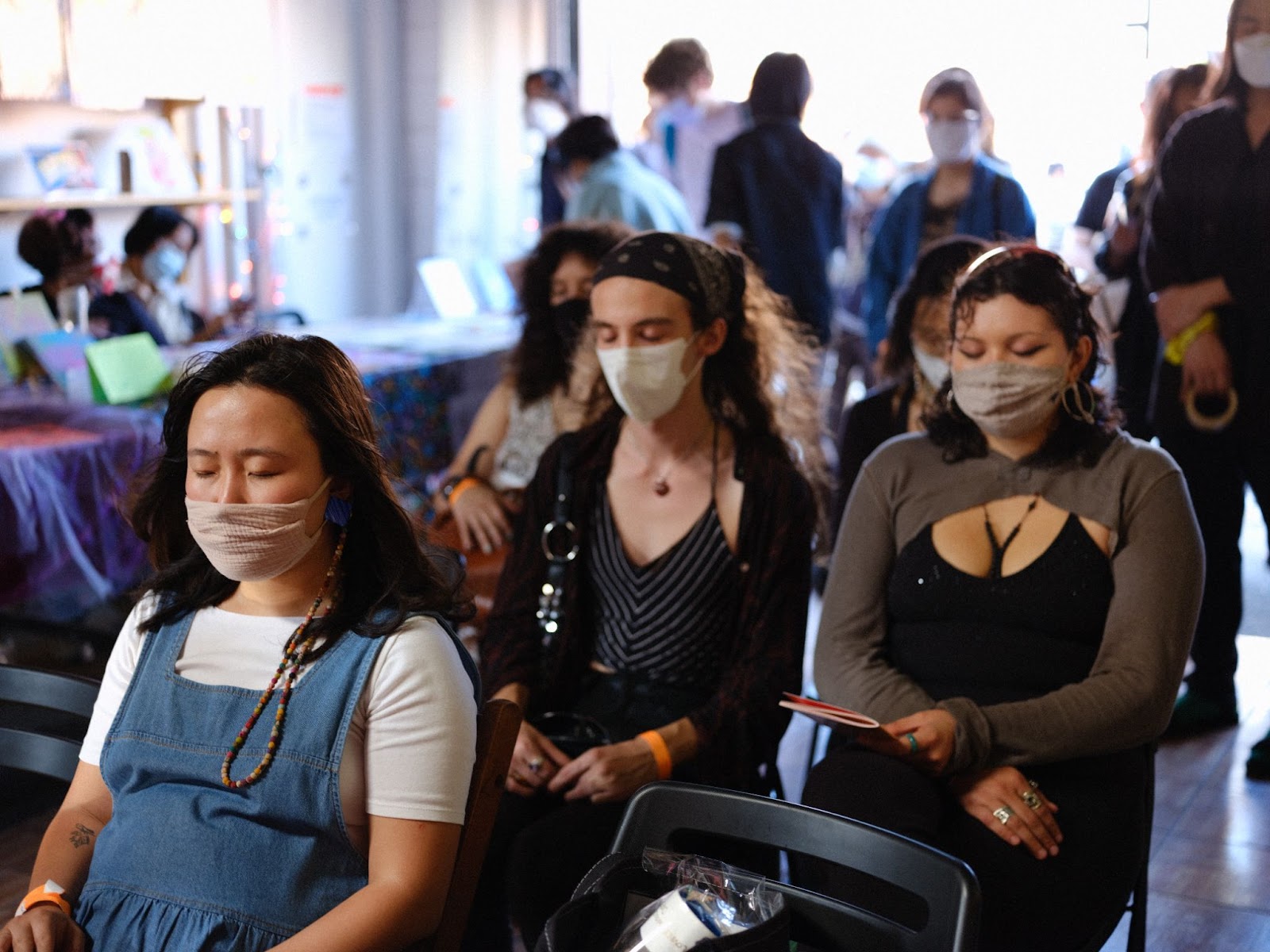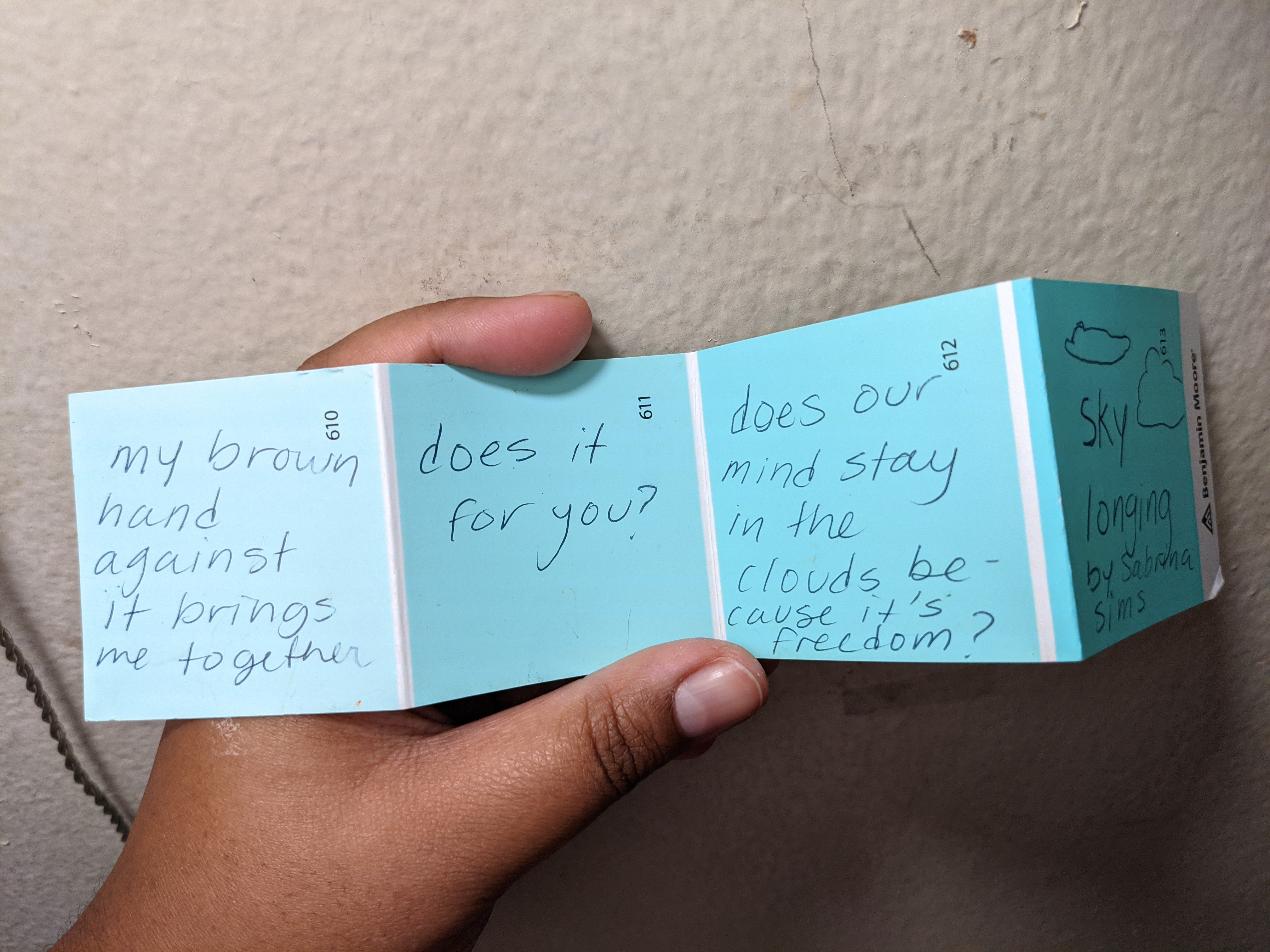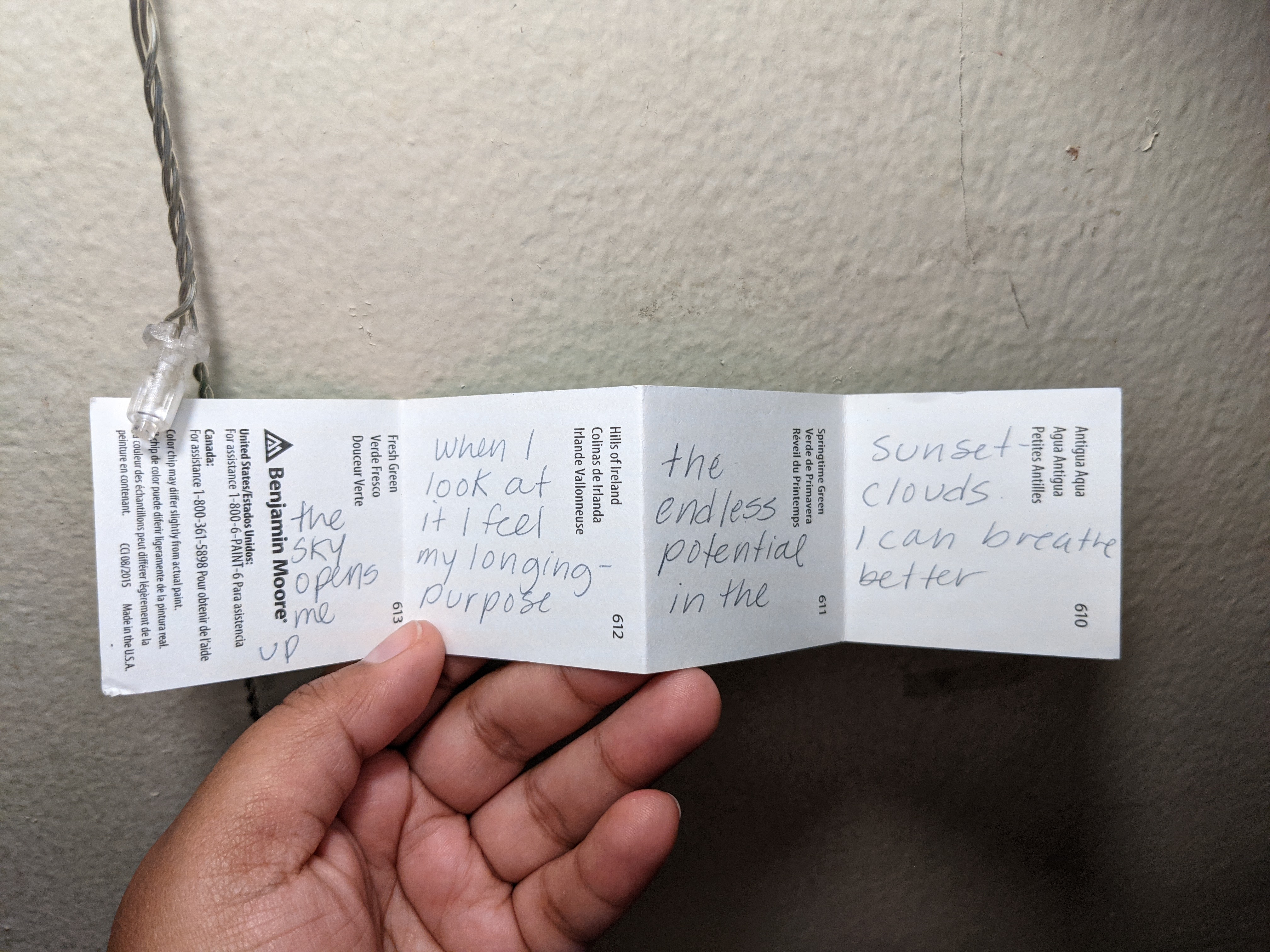How to Emerge: Towards the Emergence of Equitable Zine Fairs
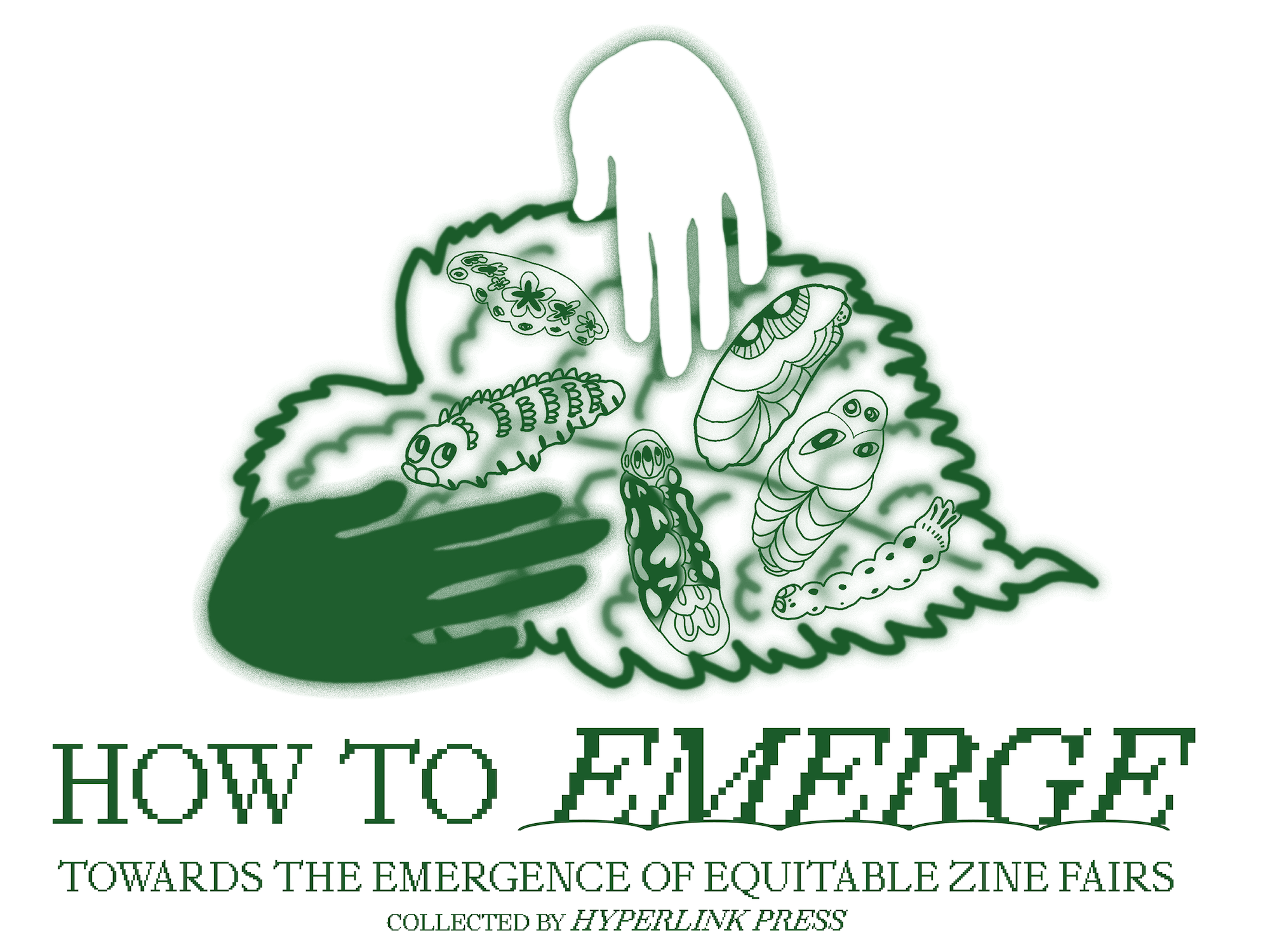
Collected by: Hyperlink Press in collaboration with: Yellow Pearls
With the contribution from our Emergence Zine Fair participants and supporters
Web design by: Jeong Lee; Hyperlink Press
Special project made for Printed Matter + EXILE Books for NADA Miami 2021
Intro & Intent
︵︵︵︵︵︵︵︵︵︵︵︵︵︵︵︵︵︵
Towards the emergence of equitable Zine Fairs is a new, interactive webzine showcasing the “how-to” in organizing equitable zine fairs and work of emerging zinemakers and meditating on questions of representation and access. Zine fairs and art book fairs often produce a scarcity model; paper, printing, funds, and relevant skills can be a hindrance to young artists, especially those working outside of the west. This project draws inspiration from the recent in-person Emergence Zine Fair in NYC, organized by Hyperlink Press and Yellow Pearls Zine, and offers an opportunity for DIY, emerging zinesters to present their work in a new online format. In place of the sometimes exorbitant pay-to-participate Fair model, Hyperlink Press redistributes its commission fee to imagine and enact a system in which artists and zinemakers are paid-to-participate. In doing so, they ask: how much would change if artists and bookmakers were instead paid for their time, labor, and participation?
Hyperlink Press is a queer Korean diaspora zine collective inspired by a cyber lesbian utopia project in South Korea called LB City (2000-2003). The concept of the lesbian utopia addresses how someone whose identity isolated from cis-heteronormativity navigate in the patriachal governing and economical structure. In order to break away from the scarcity model and bring equity, we found it crucial to uplift one another with our community members and collaborators.
“How to Emerge: Towards the Emergence of Equitable Zine Fairs” features gathered logistics from Hyperlink Press & Yellow Pearls Zine’s Emergence Zine Fair which was a trial zine fair model wherein the emerging artists/zine vendors get paid to be part of the zine fair. Through “How to Emerge,” we are openly sharing the data and reflection on our process, planning, and interviews with emerging zine makers and how we can make more equitable zine fairs.

Table of Contents
︵︵︵︵︵︵︵︵︵︵︵︵︵︵︵︵︵︵
Brainstorming to Making it Happen by Taehee Whang (Hyperlink Press)
︵︵︵︵︵︵︵︵︵︵︵︵︵︵︵︵︵︵
Brainstorming
1. Set Concept / Proposal

- Conceptualizing your zine fair/event is helpful when you are trying to allocate funds, space, and collaborators for your events.
- Based on the budget and the space, we have decided that Emergence Zine Fair (EZF) will be a one day zine fair with 12 vendors total.
2. Timeline / Communication

With your team, check everybody’s availability to decide on the event date, regular check in meeting day and the mode of communication. We have found at least one a week check in meeting very helpful and kept us in the loop naturally. We used both Slack and Instagram DM chat groups as the main platform for communication.
3. Outreach
- Securing the event location helped us immensely. Hyperlink Press is part of Soft Surplus, a co-opt studio where the members can host the events at the space. We submitted our event proposal with the studio members and secured the date in advance.
- We started to brainstorm a list of potential vendors and collaborators. In the very beginning, we listed more people in case … schedule doesn’t work out. Set a max number of vendors you can accept (think about budget and space for accommodation* check logistics). Also you will have clearer ideas of administrative roles that will be required from the organizing team.
- For EZF, we had very limited vendor spots due to space and since it was our first zine fair we have decided to use “word of mouth” tactics to find the vendors who are in need.
- One vendor list is fully completed… send out an invitation with the zine fair pitch/flyer.
Example draft here!
- Follow up with the confirmed vendors with a guideline and participation form to examine what they need (Usually from this survey you get a more concrete idea about what type of setup will be required such as vendor rest space, # of volunteers to assist the vendors, and refreshment needs). In the form we asked the following:
- Name
- Vendor/Collective Name
- Proof of vaccination
- Preferred method for honorarium payoff
- Accessibility Needs (ramps, concerns about stairs, transportation, etc.)
- Printing Needs
- Social media handles - On the week of the zine fair confirm with all the vendors and update the finalized event information. For new coming vendors, we listed items to prepare, such as table cloths.
Logistics
1. Finance
- Our main income for this fair was from the City Artists Corps grant from NYFA and donation. Next time, we wonder if creating merch or fundraising would have helped covering not only the vendor fee but administrative labor.
- Honorarium/Admin hour: For the zine fair we decided to set honorarium instead of hourly rate for the admin labor since we weren’t sure how much time would be put into organizing.
- Have a spreadsheet to keep track of your spendings!
- List down supplies and look up the estimated cost!
- It’s always worth it to hire a photographer for both promotion, documentation, grant report, and also future grant proposal. Get a quote first from a photographer or videographer before finalizing the budget.
2. Setting Up: Space
- Entrance: Since this will be the spot where the door person checks the ticket and monitors the crowd.
- Vendor table layout: Try to give enough room between vendors and visitors.
- Setting a space diagram like this will help picturing how many people can fit in the space. For EZF, we also set max capacity to give enough space for people and also to follow COVID-19 Regulation.
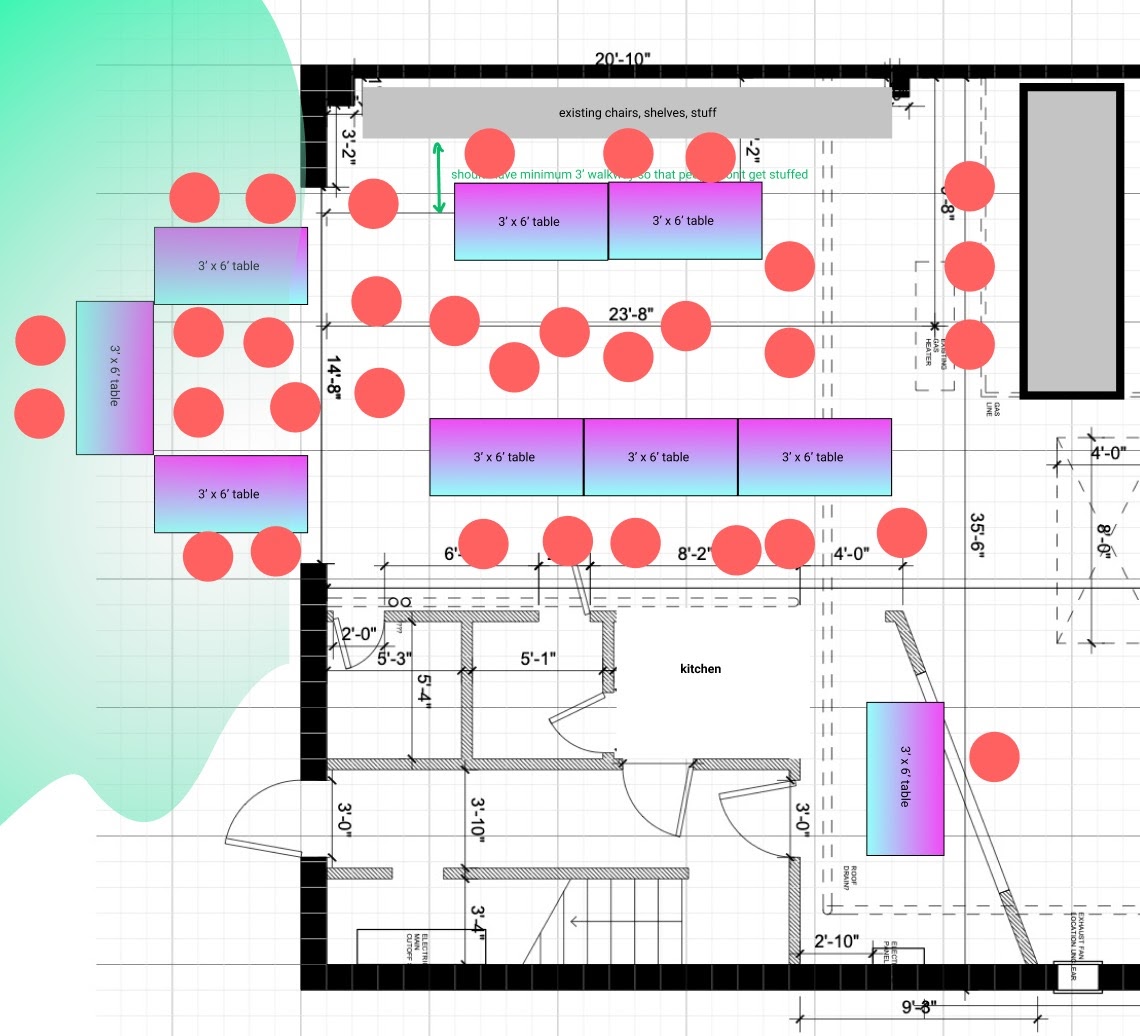
- Layout should consider the size of Zine table (full size 6ftx3ft) and the numbers of chair
- Full table can fit 8~12 zines & merch
- Based on previous zine experience, it is appropriate to prepare 8-12 copies of each zine/print for one day fair.
3. Printing Access
- Check in with the vendors who requested a printing access and risograph workshop and then set an appointment. For one zine project of 50 editions, a few postcards and stickers, we took 2 and half days to produce.
- Studio visit & Consultation: picking out the work that is appropriate for zine projects.
- File setup: Digitizing and color separating the image for risograph.
- Risograph Demo
- Printing
- Collating & trimming
During & After the Fair
1. During the Fair
- Crew & volunteers: Deciding on the roles and shifts before the zine fair
- Vendor breaker: gives breaks/refreshments to the zine vendors
- Door person: checks the reservation, proof of vaccination, and monitors the cap number in the space.
- Monitor/point person: for questions or safety concerns
2. After the Fair
- We followed up with the vendors, crew & volunteers via anonymous survey to check in and get feedback. (Also it is a good timing to share the event photos and videos)
- The list of questions we asked are:
- Did you present any new work at the Emergence Zine Fair?
- Was this your first time participating at a zine fair as a vendor?
- How much did you earn from the fair?
- Was receiving the honorarium improved your zine maker experience? If so, how?
- If this was your first zine fair experience, would you still continue making zines after this fair?
- Is there feedback you'd like to give us about the fair? How it was run, layout, communications, etc. We are really invested in this model and hope to do it again and would love any notes. - Send out remaining honorarium after doing the final budgeting !
We hope this information is helpful in planning your own future equitable zine fair!
Programming & Organizing Tips by Yellow Pearls)
︵︵︵︵︵︵︵︵︵︵︵︵︵︵︵︵︵︵
My name is Samantha Skinner, I’m a Brooklyn-based multimedia producer focusing on social impact film and zine work about the Asian diaspora. I had the pleasure of organizing the Emergence Zine Fair with Hyperlink Press on October 16th, which included zine vendors, a workshop, panel, livestream, and the launch of my newest edition of Yellow Pearls, the mental health resource zine for Asian American femmes. As an emerging zine maker myself, partnering with a warm and supportive collective like Hyperlink Press helped me to feel confident in releasing my work, both emotionally and logistically. These feelings were only amplified by this exciting zine fair event we pulled off together, where vendors, artists, and attendees all expressed great joy in participating in an event centered around uplifting artists and Asian American femmes. It was exhilarating to combine our various experiences with event planning to pull off this joyous event.
Thanks to being awarded the NYFA City Artist Corps Grant of 5K, I was able to organize a workshop and panel with artists I admire and have collaborated with on the creation of Yellow Pearls Zine Issue #2: Channeling Rage. I used funds to print zine copies that would be distributed for free at the event, which made these zines much more accessible than their usual $20 price point. Along with Hyperlink Press, we hired crew and DJ’s, provided refreshments for artists, and decorated the event space to match the themes of emergence and rage of our event. In an effort to reject gatekeeping, I would like to share resources, tips, and structure for how I organized my areas of Emergence Zine Fair. The first section will include how I planned the Yellow Pearls release, programming, and special guests. And the second section will include tips for how you can plan your event!
How I planned the Yellow Pearls release, programming, & special guests
Yellow Pearls is a zine series for Asian American femmes to heal, rage, and learn about community care. The zine series is made of research, cathartic activities, and insightful interviews with Asian Femmes working in activism and culturally informed healing modalities to radically shift the conversations around mental health in the Asian American community. For Issue #2: Channeling Rage, I talk with interdisciplinary artist, Yumi Sakugawa, and life coach, June Kaewsith, about creating ritual to channel rage, thinking about what kind of ancestor you want to be, and their personal stories with mental health and healing work. Depression has been described as anger turned inwards. Instead of suppressing anger and turning it on ourselves, what if we used that energy to confront the injustices and boundary crossings that cause the anger?

At the Emergence Zine Fair, I celebrated the release of Yellow Pearls Issue #2: Channeling Rage by distributing 100 free copies of my zine, and facilitating a workshop and panel discussion on rage in the Asian American femme experience!
Copies of Yellow Pearls Zine Issue #2: Channeling Rage are now available for preorder! To learn more, visit www.yellowpearlszine.com and follow me on Instagram @yellowpearlszine!
Programming
While brainstorming with Hyperlink Press, we decided it would be fun to plan a couple of special events throughout the day. I immediately thought of reaching out to Yumi Sakugawa and kwonyin, two incredible artists that I collaborated with for the creation of Yellow Pearls Issue #1: Self-Healing and Issue #2: Channeling Rage. Because I received the NYFA CAC Grant, I was able to offer them a stipend, as well as the possibility of being flown out and housed for the event. I made contact and pitched that I would love for them to participate. Yumi was available to attend the event in person, and kwonyin let me know that she was able to participate virtually. Collectively we decided that it would be a blast to have a panel discussion, as well as an in-person workshop, and livestream.
Planning the panel & livestream
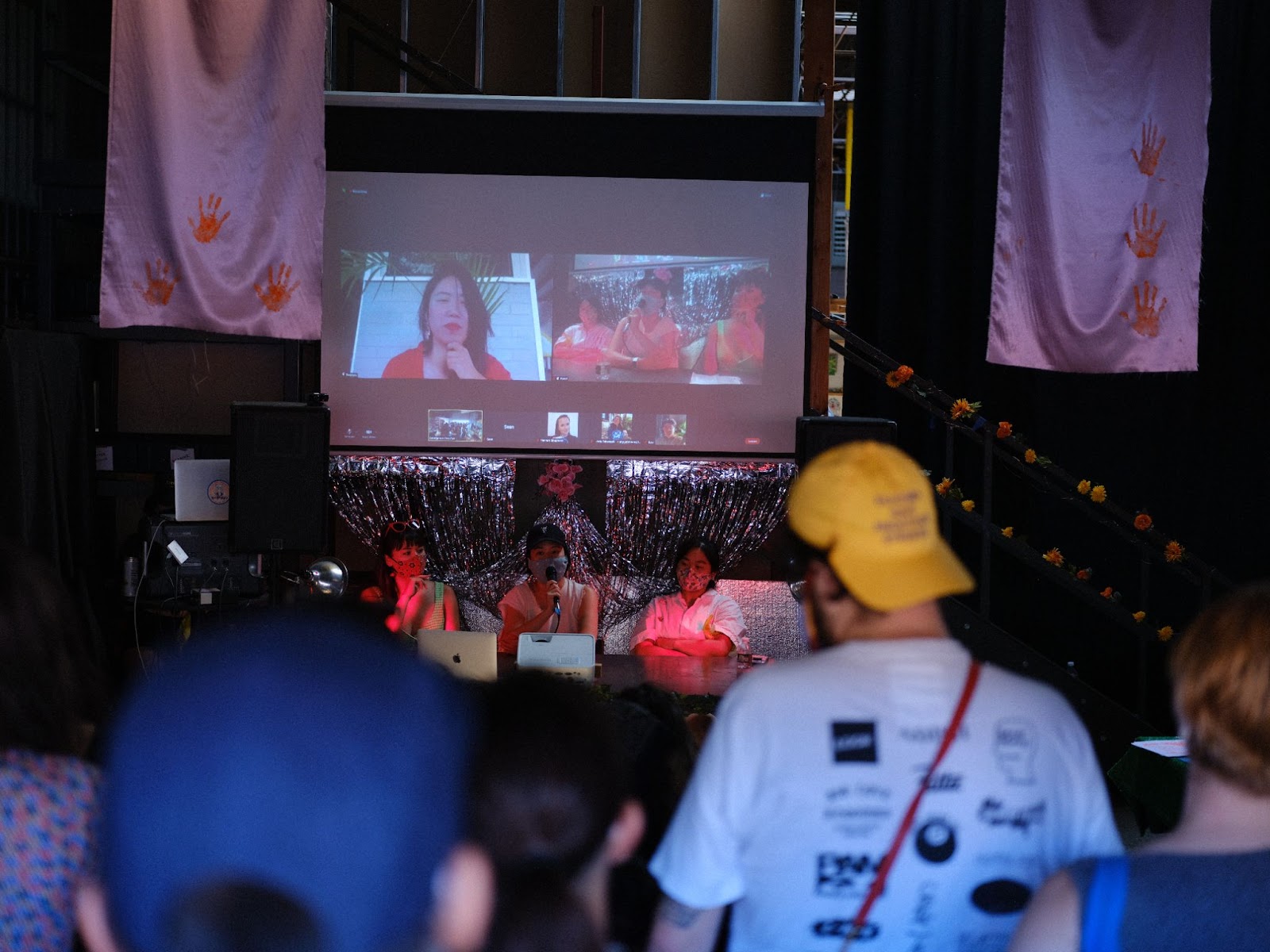
For the release of a zine about channeling Asian femme rage, why not have a panel discussion with Asian femmes on their relationship with rage?? This was a suggestion from Yumi Sakugawa that I absolutely loved. Yumi would be there in person, I could moderate, I could rope in a member of Hyperlink Press to join the conversation (Thank you Taehee!!!), and all there was to figure out is if I could include kwonyin as a virtual panelist. So it was time to do some tech tests to see if we could pull this off!
I had a friend of mine from Soft Surplus, the event space, join me on a sunny Sunday to try this out. I set up a regular Zoom meeting that we could test calling into as 1) in-person panelists, 2) a virtual panelist, and 3) a livestream audience member, and 4) a camera for the in-person audience. We had a simple PA system that hooked up to the house speakers in the event space. We plugged microphones into the PA system for the in person panelists, and used an aux cable to connect a laptop with the virtual panelists audio to the PA. I took a “monitor out” from the PA and plugged it into a USB interface so I could send a mix of the in-person panelists to Zoom where it would reach the livestream and virtual panelists. Lastly, we plugged a laptop into a projector via HDMI so the virtual panelist could be displayed. And it all...worked!!! Check out our pictures of how the livestream went below.
I sent a list of questions to the panelists ahead of time, and let them know that I would be introducing them one by one. When it came time for the event, I had index cards that included each of the artist's bios, and all of the questions I would be asking. It was SO incredibly helpful to have these, and allowed me to be present. We talked about each panelist's relationship to rage, tools for channeling rage that have worked for them, how their unexpressed rage can show up in their lives, and their wishes for Asian femmes who are just getting to know and form healthy relationships with their own anger and rage. We had wonderful questions from an engaged audience and had an incredible time. I’ve included Yumi Sakugawa and kwonyin’s testimonials of what it was like to be special guests below. A recording of the livestream will be available on Yellow Pearls website
Planning the workshop
Since Yumi Sakugawa was able to fly from California to attend our event, I realized what an incredible opportunity this would be to have her lead a workshop. If you do not follow her work, she is an experienced facilitator of workshops and has many recordings available on Crowdcast on topics ranging from Sacred Asian Femme Rage to How to Meditate to Healing Money Shame. As a part of our collaboration on Issue #2: Channeling Rage, Yumi contributed an activity named “SACRED RAGE GODEXXX” that I asked if she could lead for attendees. She excitedly agreed and sent me a list of materials she would need. The next step was to find the right space for this workshop. Soft Surplus, our event space, has a workspace in the back where machinery, wood cutting materials, and gear are used and stored. With the help of friends and event organizers, we were able to clear it out and set up rugs, drapes, pillows, lights, and decorations to create a meditative and sacred space!

Once it was time for the event, I introduced Yumi to the audience, and she led 20 attendees through meditation and writing prompts about assessing their own relationship with rage and through a cathartic visualization for channeling rage. For one powerful hour, tears were shed, rage was channeled, and friends were made!
Special guests
It was an honor collaborating with Yumi Sakugawa and kwonyin for these special events. Ever since I began making Yellow Pearls, I knew I wanted to work with both of them. In my own personal journey with mental health, much comfort and growth has come from learning about the intersections of my identity, and how these power dynamics impact how I experience the world (ex: sexism, racism, and classism). Two of the very first people I EVER saw talking about Asian femme identity and mental health were Yumi and kwonyin. It felt so powerful to add to this conversation by not only releasing my zine, but bringing community around these important topics. Here is more information about the two artists, as well as their testimonials of what it was like to be involved in Emergence Zine Fair.
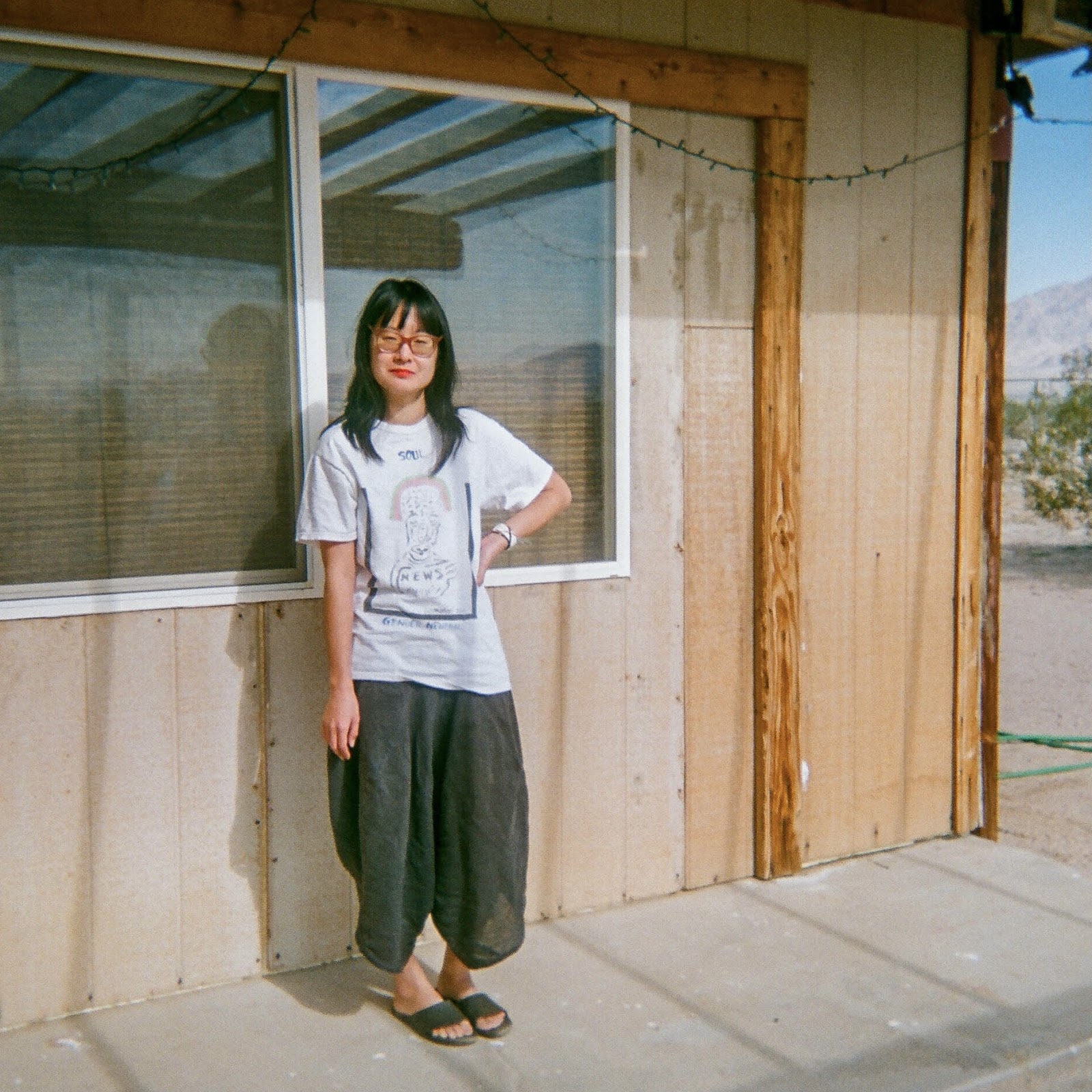
YUMI SAKUGAWA, Special Guest Artist
Emergence Zine Fair Panelist & Workshop Facilitator
IG @yumisakugawa
YUMI SAKUGAWA is an Ignatz Awards nominated comic book artist and the author of I THINK I AM IN FRIEND-LOVE WITH YOU and YOUR ILLUSTRATED GUIDE TO BECOMING ONE WITH THE UNIVERSE. Her comics have also appeared in The Believer, Bitch, the Best American NonRequired Reading 2014, The Rumpus, Folio, Fjords Review, and other publications. She has also exhibited multimedia installations at the Japanese American National Museum and the Smithsonian Arts & Industries Building. A graduate from the fine art program of University of California, Los Angeles, she lives in Los Angeles.
YUMI’s Reflections on Emergence Zine Fair
“ Participating in EMERGENCE ZINE FAIR as a special guest and vendor was a really incredible experience to me for many reasons. Not only was it the first in-person zine fest I have participated in since the beginning of the pandemic, it was also my first time experiencing a zine fest that centered Asian American femme mental health and specifically explored the topic of Asian American femme rage--something I cherish deeply as a second-generation Japanese-Okinawan-American femme artist who has felt extremely isolated and helpless in my own mental health struggles in the past. After a very long time not attending community events in person for most of 2020 and 2021, it was revitalizing for me to be reminded of the importance of people coming together in person to share art, discuss important issues, destigmatize mental illness, and celebrate creative expression of marginalized communities in an accessible space.
The community care and love was palpable in the air, and I hope many more experiences like EMERGENCE ZINE FAIR emerge in other communities as we continue to collectively navigate this world of ongoing uncertainty. ”

KWONYIN, Special Guest Artist; Emergence Zine Fair Virtual Panelist
IG @kwonyin
KWONYIN is a 1.5 generation Korean-American healing artist, emotional alchemist, and teacher of yin. Based in California, kwonyin conducts self-study programs such as Asian Femme Catharsis, Visibility Shame, and Erotic Visibility. She works with shadow energy and trauma blockages, helping Asian femmes to release old patterns and reclaim the power of their voice and authenticity.
KWONYIN’s Reflections on Emergence Zine Fair
“ I could feel the ecstatic applause of our ancestral lineages beaming through all of my cells because we came together to give voice and space to the very thing they weren’t able to express. Unrequited rage of mother, grandmother, great grandmother living in me are being healed through me, through us. Spotlighting asian american femme rage that day was truly a historic reclamation moment for us. It was so special to share space and feel how connected we are at our core. To remember you’re not alone and that healing happens when we dare to share and create from that core of truth and love. In the ongoing struggle to evolve beyond our inherited oppressive limitations with deeper understanding, I felt a massive surge of new optimism and healing this day ♡ ”
How to plan your event
I’ve thought through the steps Hyperlink Press, Soft Surplus, and I took to plan the Emergence Zine Fair, and have pulled out what I think would be helpful for you to think about if you’re planning your zine fair! This is going to look a little different from one individual to the next, but these are the steps that worked for us, along with tips that I have picked up from planning music and film events over the years.
1. Planting Seeds (AKA Meetings)
- Plan a meeting:
This is where it all begins! Get together to establish shared goals. What are you working towards together? This will be your north star! I met with two members of Hyperlink Press over Zoom where we got super giddy, but also down to business >:)
Hyperlink Press’s goals included supporting early zine makers by creating a sustainable zine fair model. For Yellow Pearls, after a hard year of hate against our Asian community, my goal was to provide cathartic experiences for channeling anger and rage. We realized that both of our goals included a theme of “emergence” and rising above struggles through community support. Thus Emergenze Zine Fair was born!
- Create a timeline:
This can be very loose as you start out! What’s important is to begin the process of building structure together. You can start with your event date and work backwards. What benchmarks would be helpful to have? Perhaps weekly progress update/accountability meetings?
When would you like to have a tech rehearsal? Like to have all crew and artists locked? Etc! I’d recommend having around 2 months to plan and promote your event.
- Brainstorm lists & Delegate:
Create a shared document where you can generate lists of everything you may need to source and all crew positions that will need to be filled. Create actionable items from what you brainstorm, and divvy up tasks between the organizers. I always find it's helpful to start here with an air of experimentation and flexibility. Try things out, hear ideas from everyone, and adjust as you go! Also, make sure to keep your links handy! They’ll add up quickly.
2. WATERING / GROWING (Planning, manifesting, creating, promoting)
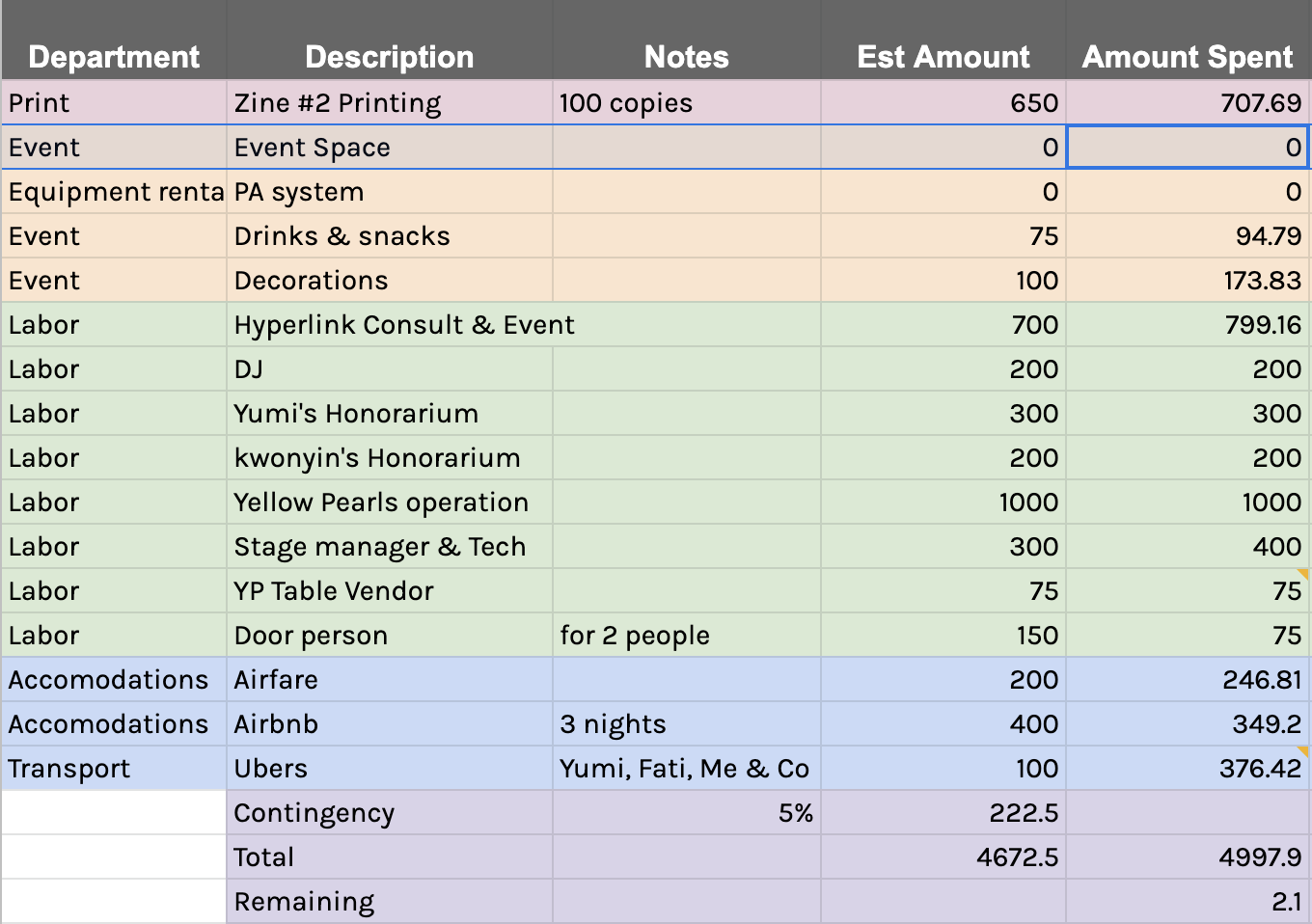
- Budget & Crew:
Start mapping out how much everything is going to be! Do your research on rates, whether that's through word of mouth, reaching out to crew, or looking on forums online. Once you have an idea of your budget, start reaching out to crew to confirm them! Here’s a screenshot of my final budget. Always include contingency!!! I promise you will need it. And enter your expenses as they come in, your future self will thank you :)
- Press Release:
Putting together a press release is a great practice to get into, especially if you have some time to promote your event. This is where you can put together ALL relevant information, links, scheduling, bios for organizations and artists involved, and most importantly, write language that can be easily copy/pasted from whoever you are asking to share this. You can include your event graphic here as well! You can see our press release here. I’d recommend taking a look at a few press releases as you put yours together! - Event Flyer:
We were able to use a design from Yumi Sakugawa, our gracious featured artist, for our flyer. Yumi gave us permission to use her illustration, and a member of our organizing team who also does graphic design whipped this up. I loved how this flyer came together, because it included open conversations about capacity and permissions, and came together beautifully in a way that made everyone happy.
- Sell Tickets or Collect RSVPs:
Having an event page like Eventbrite can help in many ways. You can use the platform to collect ticket sales or suggested donations. You can put a cap on attendees if you need to, which was important to us, given we were organizing during the ongoing pandemic. And on the flip side of this, it’s nice to get an idea of how many people to expect! You’re able to message directly with attendees, which is very helpful for reminders (ex: remember to bring your vaccination card!) and any updates. Because our event was free to the public, we used Eventbrite to collect RSVPs and set up an option to donate. Take a look at our Eventbrite here! - Have a Safety Plan:
Talk with your team beforehand about who will take care of any conflict that may arise. You may decide to let your attendees know beforehand, or display on a sign, that no harassment of any kind will be tolerated. For our event, all crew members and organizers wore yellow bandanas on their arms to give attendees an easy visual way to find someone in case they needed help.
With COVID-19, we let all attendees know they would need to provide proof of vaccination in order to enter, and that masks were highly encouraged. Our door crew checked vaccination cards and ID’s on entry. Having safety measures in place often helps people to feel more comfortable and able to relax and have a great time!
- Run of Show:
This is a schedule breakdown for the event that can include crew call times, shifts, and any notes. It’s the roadmap on the day of the event for everyone involved. Here is a copy of ours! - Programming:
Plan some special events for your attendees, and to collaborate with artists you would like to work with! This could be a livestream, panel, or workshop like I planned, or a raffle, performance, DJ set, live painting, etc! You can create graphics for the special events to further promote your event, in addition to your event flyer.
Ask all participating artists to share with their audiences as well! It’s also good practice to share your scheduling for events throughout the day with your attendees and social media followers. This way people can plan ahead and get excited!! Here were the graphics I designed for the panel and workshop.
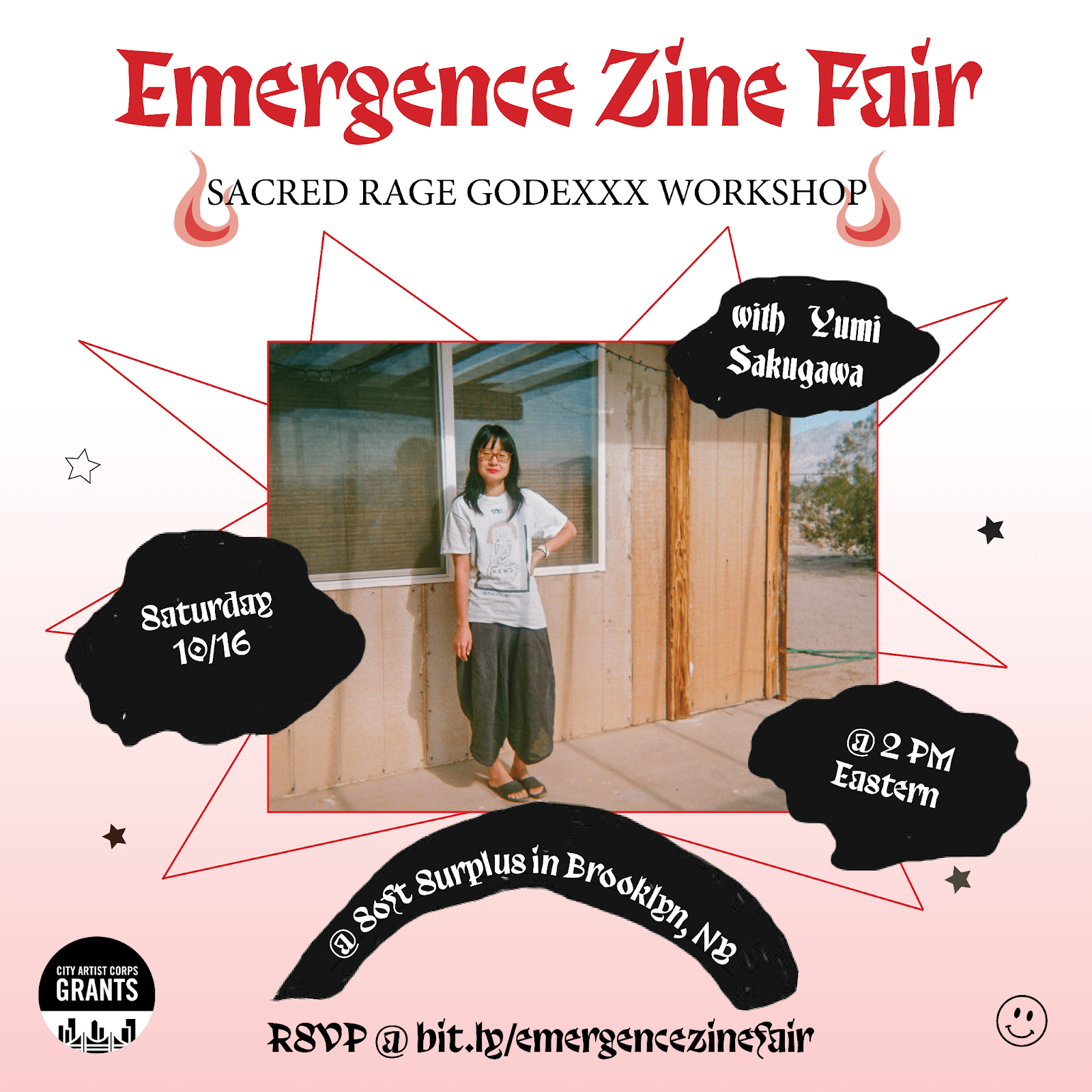
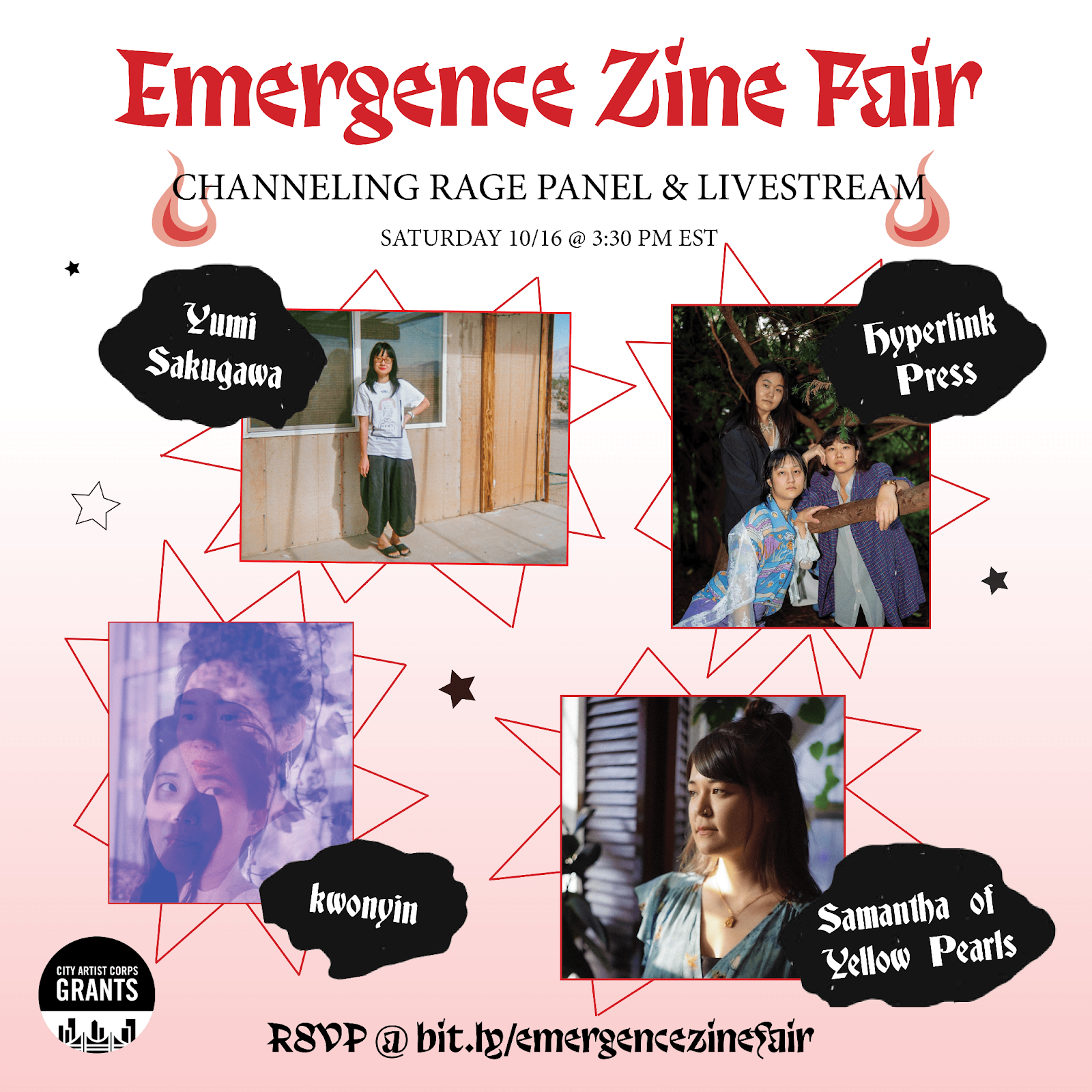
3. ADMIRE YOUR FLOWERS (Hosting your event)
Take care of yourself leading up to, and during the event. Get rest the night before. Drink plenty of water. Make sure to plan your meals out or you might forget to eat. Do what you need to fill up your energy well so you can pull from it as much as you need on the day-of!!! Schedule breaks. Seriously, schedule a couple of these in and have someone to take over your responsibilities so you can go recharge or get re-grounded. Prepare notecards. If you are leading a panel or workshop, help yourself out by writing out bullet points to guide yourself. This allowed me to be more present, and not keep running over what I wanted to say next in my mind. Have fun! Events can get high energy very quickly, if you get overwhelmed, come back to your north star you established at the very beginning. You are always allowed to ask for the support you need to be able to be present and clear-minded. Make sure to take time to meet new people, take some pictures, and walk around and see what the vendors have!
I hope these tips and information will help you in planning your zine event! I would love to hear how it goes. To learn more about Yellow Pearls and get your zine copies, visit www.yellowpearlszine.com. You can also follow me on Instagram @yellowpearlszine! Warmly, Samantha Skinner
Survey (Contribution by Emergence Zine Fair participants)
︵︵︵︵︵︵︵︵︵︵︵︵︵︵︵︵︵︵
Alfred Dudley III
he/they
@artmaps
Please introduce yourself!
Alfred R. Dudley III (b.Cheverly, MD 1995) is a studio-based artist and independent curator currently based in the Bronx. He graduated from The Cooper Union in 2018 with a Bachelors degree in Fine Arts while receiving the Vincent J. Mielcarek Jr. Award for Photography, and upon graduation; the Irma Giustino Weiss Prize as well as the Service to the School Award. His work facilitates a conversation between drawing and photography, with heavy influences from contemporary manga, painting, and literature.
How would you define an “emerging artist,” and how would the term be applied to you?
I'd define an emerging artist as somebody who is entering the public view and experiencing a new wave of attention.
I think the umbrella term of "emerging" is quite vague and useless in giving a realistic depiction of an artists life and current socio-economic status. I bring the social and economic aspect of this up because all too often artists who are "emerging" or have just started exhibiting their work aren't always in ideal financial or social positions.The "emerging" aspect of their life is mostly in relation to the newfound recognition/exposure they're receiving from gallerists, collectors, and other institutions of power. The contrast in what we see of these artists in media, versus what we would learn from sitting down and speaking with them is the core of where my distaste for the term "emerging" resides. With this logic, I don't think I'm an emerging artist. I've been a successful student before, and now I'd say I'm a great father of two cats but unfortunately my cats are not high end collectors, nor are they art critics seeking to be the founder of a "new emerging talent". I'd say I'm still submerged. Captive to the desire most of us have to surface to attention and be flooded with extraordinary amounts of opportunities and space for us to exist. For now, I'm in the abyss, crafting attention and enjoying my time amongst friends who facilitate universes of attention within and around our communities of allies.
What is your relationship with zinemaking, and how is it related to your creative practice?
Zinemaking is a new flame for me. A new format which has handed me the privilege of working in a semi-linear structure of page-turning. I'm in love. This practice has invigorated my desire for narrative work and influenced another opportunity for me to adorn my experiences in a consumable form. My practice overall engages with drawing, photography, and reportage with friends colleagues, and strangers. From those lived experiences I illustrate the memories in a manga-like universe where I am the narrator/cameraman.

How does your access to material resources (limitation/sufficiency/lack thereof) make the distribution of your creative work difficult?
More often than not, I do not distribute my work in any way. Given that I lack material resources in general, and do not have access to free printing or ink, I tend to only be able to make artwork in relationship to opportunities/events that help facilitate that. In other words, I'm perpetually in a state of waiting. Not waiting idly by, but waiting for all the things I've applied for, or shared on social media, to bear fruit in form of resources and connections that can help fuel more work. It's a cycle of patience and long periods of drought that I've struggled with. Not having wealthy patrons/parents/or an institution to support me has made distributing my work difficult as it's forced me to distribute my work on a smaller personal network basis. It's meant that I've had to deal with social media being more than recreational space, but a workspace in which I'm disadvantaged because I can't afford to pay for ads.
When do you feel most welcomed at a zine fair as a vendor?
I feel most welcomed when my time is compensated. To be welcomed in my eyes is to be greeted, understood, and nourished. When I am remunerated for my time+efforts and am shown recognition, I feel safer and granted higher agency as a creative. I feel like i'm being nurtured rather than the usual torture and disrespect of table fees and applications.
In equitable zine fairs, if you were to be compensated for your participation, which aspect do you feel the most need for support and why?
My answer to this is all of the above. All of these aspects of participation should be fully supported due to the fact that each is a potential reason a person wouldn't be able to participate.
If my time is wasted and not accounted for, I wouldn't be able to afford to spend it. If I cannot produce the work, due to not having access to a printer etc, I wouldn't be able to fully realize my work. I'm able bodied and in good health, but if I were not and didn't feel safe taking public transport due to being immunocompromised , I wouldn't have the necessary safety to participate. Exposure, which ideally gives me more more life and connections/opportunities, is perhaps a higher order, for it is the kindle to the flame that warms my life. If it were not for exposure, we would not have more avenues of survival. Without it, we would not even be in contention for continued regard+attention. I'm biased in my desire for exposure for every inch of it I've gotten has been a privilege that extends onwards.
Any other thoughts you have on equitable zine fairs for emerging artists?
Equitable Zine Fairs should specifically not be for artists who are already beyond emerging. I'm fed up and frankly pissed off at how most zine fairs are more of a money making scheme rather than an opportunity to bring power and health to the greater community. Emerging artists all too often are the ones who have been submerged in their communities, day to day, struggling to escape from the bondage of invisibility. It's infuriating witnessing zine fairs that feature predominantly artists who are beyond emerging and already flying through the skies of possibilities drenched in wide-spread support. I dream of a space where ONLY Submerged folk are shown, so that we can in some way help bridge the gap of survivability. Thank you for reading, and I hope all of my writings finds you and your family safe, and in good health.
Zach Hazard Vaupen
he/him
Please introduce yourself!
I'm a 2D/3D artist who makes images, comics, zines, and other printed matter. My work tends to deal with mental health and social issues through a very loose lens of horror and science fiction. As an artist I'm always trying to find the crossroads of the real and imagined, the digital and the physical.
How would you define an “emerging artist,” and how would the term be applied to you?
To me and emerging artist is an artist who is finally beginning to come into one's own. In terms of my own art, after decades of practice and study and experimentation, I feel in the last couple years I've finally begun making work that expresses what I've been trying to express for years both visually and contextually.
What is your relationship with zinemaking, and how is it related to your creative practice?
I love duplication and distribution as practice. For the purposes of my practice, art is born to be shared. Zines are a perfect format for experimentation and for sharing. There's no minimum or maximum in terms of quality or expectation. It has a unique freedom that most other types of printed matter do not. They also allow the artist to work solo or collaboratively, immediately or over the course many years. Zines also provide a crucial base for archival, something that is more and more reliant on ephemeral tech in the current era.
How does your access to material resources (limitation/sufficiency/lack thereof) make the distribution of your creative work difficult?
With less resources you're severely limited, but I've always been attracted to zine making because there is a decades long tradition in zine making for community and diy effort. With the built in community and shared knowledge and resources, many of the restrictions due to material wealth or access are removed (or creative work-arounds discovered), which makes zine making such an artform of the people.
When do you feel most welcomed at a zine fair as a vendor?
When fairs consider the accommodations I might need and do their best to provide those or try their best to ensure there are as few obstacles to my ability to exhibit my work and expand my community are when I feel most welcomed. I've exhibited at many fairs and conventions and some consider the artist as a customer rather than a collaborator. A renter buying space as a temporary storefront rather than an artist that is exhibiting work. I think it's important that zine fairs take their exhibitors seriously and work together with the artists to create an exhibition that has the opportunity to excel and move the attendees and community.
In equitable zine fairs, if you were to be compensated for your participation, which aspect do you feel the most need for support and why?
Transportation is certainly the greatest factor if I'm exhibiting out of town. Otherwise, production and labor is the next greatest factor, as sometimes it can be difficult to agree to exhibit at some zine fairs if I'm low on zines/other art and don't have the time or resources to make more (or even better, new) artwork for the fair.
Any other thoughts you have on equitable zine fairs for emerging artists?
Valuing everyone's time is an underrated factor of zine fairs. I've done fairs in the past that are pointlessly long, often in order to line up with another event or to milk sales, but the level of exhaustion this can cause usually vastly outweighs any benefits for anyone. Another factor is giving exhibitors a voice or a seat at the organizing table (if desired), so decisions can be made equitably, especially in terms of how funding is used and how the event is advertised/presented/contextualized.
Connecticunt
she/they
Please introduce yourself!
Connecticunt is a project created, published, written, edited, sourced, loved and cared for by Connecticut born-and-raised femmes. We ask for submissions from artists who are formally or currently Connecticut residents. Our 52-page color, glossy zine includes moon readings, paintings, essays, Connecticut news articles, crosswords, poems, short stories, and endless genres of work. The co-editors, Zoe Jensen and Iyanna Crockett, with major contributors/curators Mariana Pelaez and Izzi Geller, publish the Connecticunt Zine every other month, while also hand-printing second-hand apparel, making patchwork hats, and bedazzling lighters. The mission is to strengthen the cultural scene in Connecticut and highlight incredible artists across the state. Their first issue was published in July 2020 and they are looking forward to their fourth issue being published December 15, 2021.
How would you define an “emerging artist,” and how would the term be applied to you?
The creators of this zine graduated college in 2020 and used that time in undergrad to explore artistic avenues. All of us did not graduate with an art major, and did not have immediate access to printing, Photoshop, etc. The first issue was made with Google Slides, and now one of us uses the Creative Cloud that one of our partners gets from working at a university. We definitely played with different artistic paths in college. Zoe DJ’ed and made video art, Iyanna originally majored in Musical Education, plays viola, and also creates video art. Izzi taught herself printmaking, Mariana is an avid collage artist, poet and graphic designer, and we all worked on a zine in college at the radio station. I think as we begin our lives outside of an educational regimen, we can actually decide how we want to spend our time, on what type of art, and do it without the confines of an educational setting. I believe we’re emerging from this academic lens into who we actually are, without deadlines or grade point averages.
What is your relationship with zinemaking, and how is it related to your creative practice?
Zoe: I started making zines with Izzi, Mar, and Iyanna at the UConn radio station, where I got into collaging and making mini and larger zines. I was super excited since I worked in journalism and visual art, it was a perfect way to combine these two things I loved doing. I also had a partner in college who also loved zine making, so we both pushed each other to improve our mediums. I love that this medium doesn’t mean you have to work in one type of material, like painting or photography - this type of work allows us to put in whatever we want and tell a story, tell fragmented stories, or just make something that looks pretty. It feels like we can be totally free.
Mariana: Despite writing poetry for as long as I can remember, I never really considered myself an artist growing up because I was “bad at” drawing, painting and other more traditional art forms.
It wasn’t until the WHUS zine club (where I met these Connectic*nts :p) that I realized there are other ways of visually expressing yourself. It was through my involvement with this zine that I first started collaging and making graphics (thanks to Izzi who taught me everything I needed to know to use Illustrator). It’s also been so exciting and challenging to try putting images to express the feelings in words in my writing as well as trying my hand at writing things that aren’t poetry! In the “grown up world” there aren't a lot of places where you can try something new and not worry about the repercussions of maybe not doing so well. Zines give you that freedom! I’ve been able to write articles and reviews, without much experience, and have a welcoming outlet for that — and so many other people have also expressed their excitement to us when they submit stuff! That’s probably the dopest part of zines for me.
How does your access to material resources (limitation/sufficiency/lack thereof) make the distribution of your creative work difficult?
We print in color, which monetarily is a huge hassle. When we were putting together our first issue, we had fifty pre-ordered zines. When we went to staples to only get the exact color paper pages printed, it would be $500 dollars - meanwhile we had $200 to work with from the preorders. Luckily we found a local print shop, Best Printing USA, which has been the best partner for printing. However, it still only allows us to break even with our profit, which can be upsetting when we want to grow Connecticunt to compensate artists well for creating work for the zine. We also ship our zines across the state and country which can come at a steep cost. Since we rely on preorder funds to keep the zine going, it can be very stressful when we don’t have enough in our bank account to fulfill requests, and disappointing when we can’t order more zines for people who are interested.
When do you feel most welcomed at a zine fair as a vendor?
Zoe: Seeing vendors as humans. It meant so much at the Emergence Zine Fair that there was an area for vendors-only to decompress upstairs. The consideration of vendors to allow people to relax after talking to hundreds of people in a few hours means a lot. Providing tables and being there to answer questions means so much, but also being prepared with bathroom access, water, even coming over and chitchatting means so much. I’ve experienced this as a DJ too - people treat you like a commodity that they can place and control, rather than someone who may have needs outside of just a space to perform and share art. It means so much when someone takes in the considerations of a human: they (unfortunately) need money to get there, a place to pee, a place to decompress, a place to sit - and then the zine fair goes more smoothly.
Mariana: Being in a majority femme and BIPOC space. I’ve seen first hand how easily a creative space can change and feel unsafe when men and white people take up all the “room.” Even though the workshops focused on what it means to be an Asian Femme at the Emergence Zine Fair, many of the things discussed resonated with me as a Latina. It was refreshing to see stories being told that didn’t focus on only white women’s experiences. It was also refreshing to see femmes taking the lead and doing the majority of the speaking — I’ve seen how easy it is for men to speak over women in both creative and activist realms. Doing the work to make people of all backgrounds feel seen and represented is so important and more artistic spaces should be doing that work.
In equitable zine fairs, if you were to be compensated for your participation, which aspect do you feel the most need for support and why?
Zoe: Definitely the production of the zine. We are incredibly detailed with our zines - spacing, what goes where, how it feels to flip through the issue, what looks great next to what, along with designing and formatting written pieces for the zine. It can take a lot of time, especially when we are producing the zine on top of our day jobs. Plus, when we print extra zines for a zine fair, that can be incredibly expensive when it’s a smaller number of zines ordered. For example, usually we pay $4.50 per issue when we order over 100 copies. However, when we ordered 25 copies for our last zine fair to have something to bring, we had to spend $8.20 per issue. If organizers want people to bring lots of zines and have something to share, compensation goes a huge way.
Mariana: Transportation is also definitely crucial. Especially for us in Connecticut, we often need to travel to the city or other places because there aren’t many spaces for emerging artists here — which is why we exist! Taking the train or paying for gas can be expensive and we don’t make a profit (since printing is so expensive and we want to keep the zine affordable). We aren’t at the point where we pay ourselves as curators so it really makes a big difference for us to be able to offset things like food and gas.
Claire Zhang
they/them
Please introduce yourself!
I am a multidisciplinary artist whose practice mainly involves writing, design, and time-based media. Recently, I have been exploring the floating spaces in between communities, the shared spaces that then facilitate healing.
How would you define an “emerging artist,” and how would the term be applied to you?
The term emerging artist seems to encapsulate to me not only the experience of the beginnings of a body of work, a lifelong practice that will evolve and change with you as you grow and change, but also a way of looking at the world. As I continue to live through each day, I feel more and more a sense of awe, a daily signifier of how much I still have to learn, in my relationships with people, my relationship with myself, and my relationships (multiple) to my practice. I would like to apply this term to myself as a reminder of my relation to the world.
What is your relationship with zinemaking, and how is it related to your creative practice?
I integrated zine-making into my practice relatively recently, around 2 years ago. The very first zine that I made was called "Love Zine," and I created it as a physical object documenting the writing I had originally published as captions on Instagram. I had an interest in how I could represent my digital footprint as physical objects and how I could unite my design and writing practices within one space. Since then, zine-making has been an integral part of my practice, a space where I can think beyond grids and rectangles, a space where I can imagine something better.
How does your access to material resources (limitation/sufficiency/lack thereof) make the distribution of your creative work difficult?
I am lucky enough to still have institutional access to printing resources, but as I am graduating at the end of December, I am trying to put as much time in as I can before that access ends. Printing and binding is a labor of love and I am constantly blown away by how much work goes into the making of a printed object. Time is really the greatest limiting factor for me in production.
When do you feel most welcomed at a zine fair as a vendor?
When there is a sense of community among the vendors and the people involved. This was the first zine fair I was ever a part of, and I loved the communal meals, the vendors coming together to set up the space, the dance parties! I felt very much like everyone was happy to be there and to see and support each other's work.
In equitable zine fairs, if you were to be compensated for your participation, which aspect do you feel the most need for support and why?
As I said above, the physical production of a zine is truly a labor of love. If we were to put an "hourly wage" onto the production process of a zine or book, I cannot even imagine how much each zine would actually cost. It seems almost unquantifiable to me. But the time aspect of production seems to be the area most in need of equity.
Sabrina Sims
she/her
Please introduce yourself!
I'm Sabrina Sims, a Black Puerto Rican chronically ill & interdisciplinary artist from the Bronx. I work with a variety of mediums and materials including paper, print, sound, photography and textiles. My art spans many themes including self care, healing, Black mixed magical femme-ness and light. I also love tea and board games, as far as my other hobbies go.
How would you define an “emerging artist,” and how would the term be applied to you?
I'd define an emerging artist as someone who's early in their creative career. They're making connections to other artists and developing their work.
I would apply that definition to myself. The interesting thing is that I've been making art most of my life. I really got into it in high school with drawing and painting.
The difference now (in the past two years) is I'm more visible in the local art world. Doing events like zine fairs & workshops has made it easier for other people to see what I do.
I definitely have been experimenting with my art more too. The more I make, the more I'm in tune with my creative intuition.
What is your relationship with zinemaking, and how is it related to your creative practice?
I started zinemaking in 2019 as a way to document experiences and process emotions. I still do that now, but what has changed it that zines have become a more experimental, playful medium and tool. I've make about 35 zines since then - they encompass photography, poetry, collage and more. What ties them together is storytelling in the pursuit of finding my truest, happiest self.
Zines are a tangible form of my art and thoughts that people can interact with. Instead of being purely ornamental, zines are meant for people to connect on a deeper level.
Deeper doesn't always have to be serious though! Zines have a low cost to make, especially since I use materials I already have. This makes it less scary to rip up paper, scribble and collage. It's very freeing to not worry about wasting a blank zine vs something more expensive like a canvas.
How does your access to material resources (limitation/sufficiency/lack thereof) make the distribution of your creative work difficult?
Having to print and fold each of my zines is definitely costly and time consuming. I think having a dedicated studio space would make distributing my work easier. And it would just be easier to create in general. My apartment is my studio, so it doubles as a work and living space. My big goal is to have a dedicated studio space next year. I want to be able to rest without worrying that I have an art mess out.
Sourcing art supplies is also a struggle. I live in the Bronx and there are no art stores here. That's because of systemic racism. There are so many local artists here that would benefit from an accessible store.
I try to get paper and other basic stationary things in my neighborhood but when I can't, I have to go to Manhattan or order online. I shop local as much as I can because it puts my money back into our local economy and sustains it.
When do you feel most welcomed at a zine fair as a vendor?
I feel most welcomed when I'm getting paid for my work and the organizers have all the info about the fair readily available (like accessibility notes). I also think it's very important for there to be other Black, Indigenous and Latine vendors.
In equitable zine fairs, if you were to be compensated for your participation, which aspect do you feel the most need for support and why?
I need the most support for time, production and transportation. It takes a lot of time and effort to get ready for a zine fair. Worrying about if I'm going to make any sales makes it more stressful. I feel more comfortable if I'm paid ahead of time, like any other job.
Even though I've done many zine fairs, it's still a struggle having to make inventory (zines, prints, stickers) every time. I've started asking friends and family for help, but paying them for their labor is another expense I often can't afford.
There is a lot to consider with transportation to and from zine fairs. None of the zine fairs I've been to (except mine) have been local. If a zine fair isn't local, I have to pay for a cab or other transportation to carry all my equipment and items. The time and energy sink is expensive too. Getting money to offset these barriers would be so helpful.
My chronic illness makes all of these issues harder to deal with. If zine fairs and the art world want to be equitable, especially for Black, Latine and Indigenous people with chronic illnesses/disabilities like me, paying us is an important first step.
Any other thoughts you have on equitable zine fairs for emerging artists?
I think that we need to have a better system of networking and resource sharing in the art world. So many opportunities are word of mouth, but what about the artists that are less networked? They deserve support too. This is really important for non-traditional artists, like ones that haven't gone to art school & Black, Indigenous and Latine people.
"sad dreams about you" is a zine about processing a dream I had about an estranged friend.
"sky longing" was made on a paint swatch and is freeform poetry.
"spiral of lasting hurt" is an unpublished risograph zine. It is a non-linear zine, which means the words can be read in any direction - left to right, top to bottom, horizontally. This means the reader has a new experience every time they read it. There are inside pages that open up like a map and are double sided.
Sunmi
they/them
Please introduce yourself!
I'm a cartoonist based in what is known as Baltimore, Maryland on the occupied land of the Piscataway people. My comics and body of work explore themes of emotional distance and fantastical femininity, within a framework of queer and Korean diasporic identity, history, and mythology.
How would you define an “emerging artist,” and how would the term be applied to you?
I don't feel particularly great about the term to be honest. I'm a career artist by choice and practice, but I believe in the value of art as a means of communication, and the act of creating art as a means of expression, catharsis, and emotional processing for all people, especially those who are marginalized. The capitalist associations of "emerging" also tie into that of novelty and freshness, which make people like products, easily exploited and dumped once tired.
Though I am in the early stages of a career, I don't believe that my labor is any less valuable than someone who is established in my field, and I would even argue that my generation of young (queer) cartoonists (of color and from varying backgrounds of disability and intersectional identities) are making brilliant and beautiful art every day, and have been since the moment we decided to. I extend this to artists and creative workers in the global south, who are prone to be further exploited by our large corporations.
What is your relationship with zinemaking, and how is it related to your creative practice?
I always go back to when I was a child who would write and draw stories on copy paper, staple them together, and share them with my friends. Zines are my creative practice as much as comics are. The two have an intertwined history, and are how I am able to experiment and explore my ideas on paper, and with others. Paper and ink are my most comfortable and beloved medium.
How does your access to material resources (limitation/sufficiency/lack thereof) make the distribution of your creative work difficult?
I am fortunate to have ample access to material resources, and be connected to many peers and artists whose work I admire through higher education and bicoastal location. I have also always been flexible and working from a DIY mindset, so I am able to keep travel costs low, find cheap deals on equipment and materials, and always seek to create something interesting with whatever I have access to. Overall, people in zine communities have always been generous to me, so I am happy to pay it back to others.
When do you feel most welcomed at a zine fair as a vendor?
I feel most welcomed when the organizers are transparent, communicative, interested in a relationship beyond a single event, and above all, willing to provide care for their vendors that includes accessibility needs as well as simple nourishment like food and water for the long hours that we are tabling.
In equitable zine fairs, if you were to be compensated for your participation, which aspect do you feel the most need for support and why?
For myself, transportation and overall accessibility are most important. Exorbitant fees and expecting your vendors to pay for access to the space is the biggest barrier in my mind, but grants for production costs are also important to encourage people to be able to freely create and commit to new projects.
Any other thoughts you have on equitable zine fairs for emerging artists?
I think in the state of world as we are, giving people money has simply become a way to give them the ability to choose how to move forward. Money and privilege does not make people creative (if anything, rich white people and their ideas are very uncreative and boring...) but gives them the chance to for one, survive, and two, imagine how to share their inner life in a way that is meaningful and powerful. I am cynical about most things, but I hope I can remain fond of the way that sharing a zine, whatever it contains, can be a spark between two minds, and ideally many more.
Thank you!
We look forward to seeing you next time!
